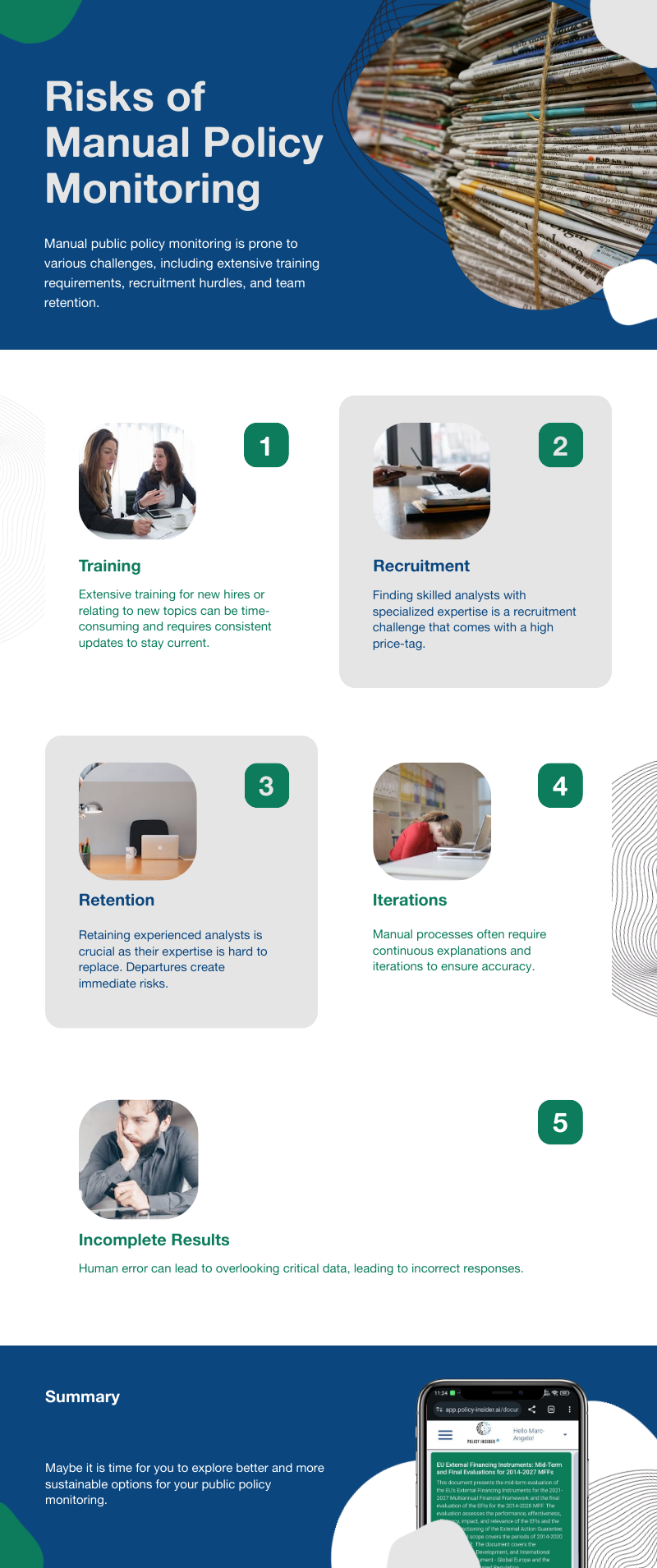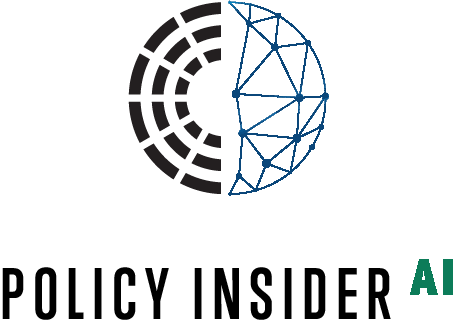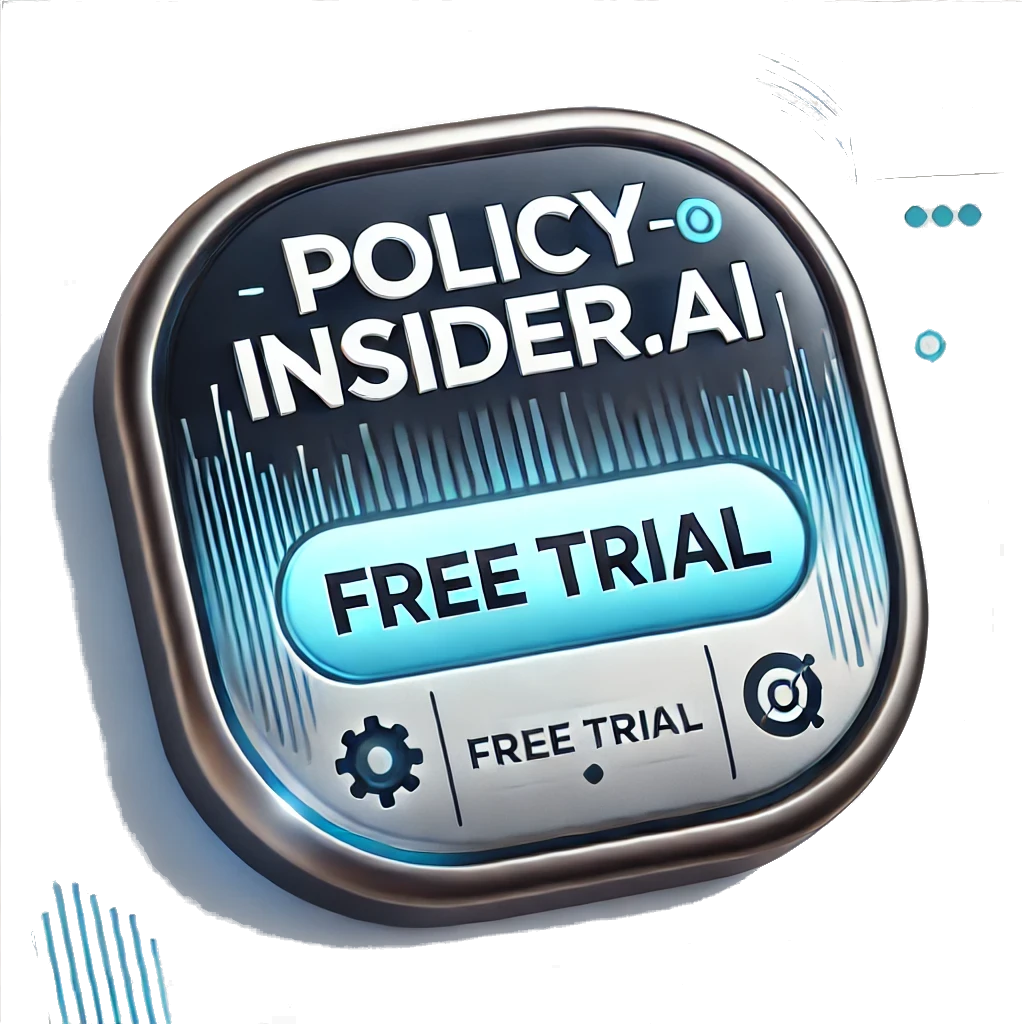Traditional methods of policy analysis often involve manual data collection and interpretation, which can be incredibly time-consuming and prone to errors.
Analysts must sift through vast amounts of information from various sources, a process that not only takes considerable time but also carries a high risk of overlooking critical documents and developments.
Additionally, the manual nature of this work means that insights are often delayed, limiting the ability to respond to policy changes as early as possible.

Risks of Manual Policy Monitoring
Training Requirements:
Manual policy monitoring requires extensive training for new team members, which can be time-consuming and resource-intensive. Ensuring that all team members are up to speed on the latest methodologies and tools is a continuous challenge.
Need for Continuous Explanations and Iterations:
Manual processes often require continuous explanations to the team and iterations to ensure accuracy and consistency. This can be a drain on time and resources, as researchers and analysts need to constantly verify their findings and correct any discrepancies.
Recruitment Challenges:
Finding skilled analysts who are proficient in manual policy monitoring is increasingly difficult. The specialized nature of the work and the demand for high-level analytical skills can make cost-effective recruitment a significant hurdle.
Team Retention:
There is always a risk of losing experienced team members to other opportunities. Given the steep learning curve, the departure of trained analysts can leave significant gaps in expertise, requiring further investment in training and onboarding new hires.
Risk of False Negatives:
Human error in manual analysis can lead to false negative findings, where important documents, data points or trends are overlooked. This can have serious implications, as critical policy changes might be missed or misinterpreted, leading to inadequate responses.
Start trusting technology to de-risk your public policy monitoring
Read more: The future of policy analysis: Leveraging AI and Big Data
Try it out: Access our webApp for three days, no credit card required.


